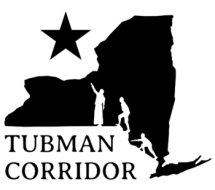NIAGARA FALLS REGIONAL PUBLIC MEETING - April 21, 2024
Questions & Comments
Q: How was the route determined?
An URCNYS internal planning team asked the consultants, Hargrove International, to identify a continuous route traversing from the New York City border with New Jersey north to Albany and west to Niagara Falls. The route needed to designate state roads (not interstates or toll roads), connect the five “Travel with Tubman” sites recognized by the National Park Service, and preferably not travel other designated byways.
Q: What are the barriers to expect?
There may be some opposition to the restriction on future billboard permitting (a requirement of the Department of Transportation).
Q: Focuses on current and future resources, how are gaps to be handled?
The Corridor Management Plan will address not only what resources exist but also where there are apparent gaps and includes strategies for overcoming barriers, eliminating gaps in the next 10 years.
Q: Who is on the Advisory Council?
The Advisory Council’s membership is still being recruited. These individuals will be responsible for guiding the corridor’s integrity and stewardship of its intrinsic qualities. They will be recognized historians, interpretive experts, and descendants/relatives of Harriet Tubman and other Abolitionists and Freedom Seekers who lived in New York.
Q: How can we stay engaged after the meeting?
A: Visit the CMP website, https://harriettubmancorridorny.com, for updates on the planning process, future meetings, requests for information, and other resources.
Q: What does URCNYS stand for?
A: Underground Railroad Consortium of New York State.
Q: Usually, things aren’t transparent. How do people who are interested stay in touch?
Provide your contact information to the Corridor Coordinator, Sage Hamilton-Hazarika at 347-575-4609 or sage@urcnys.org. You can also visit the CMP website, https://harriettubmancorridorny.com, for updates on the planning process, future meetings, requests for information, and other resources.
Q: How can I get my home in Cambria included on the route?
Please send information about your property and its association with Harriet Tubman or the Underground Railroad to the Corridor Coordinator, Sage Hamilton-Hazarika at 347-575-4609 or sage@urcnys.org for review/consideration.
Q: How many byways are in New York?
A: New York has four nationally designated scenic byways and 26 state-designated byways. Visit the New York State Scenic Byways website for a complete list.
Q: What is the economic impact of other byways?
A: The National Scenic Byway Foundation reports that Route 66 (a 2,451-mile byway) contributes $132 million annually to the local economies it travels through. Scenic Byway 12 in Utah (134 miles) has an annual economic impact of $13 million. Dorchester County in Maryland conducted a community and economic impact study for the state’s 125-mile Harriet Tubman Underground Railroad Byway in May 2021. Based on 251,155 net new visitors to the byway each year, they contribute $23 million in sales annually to the area. Additional economic impact information is available by contacting the Corridor Coordinator, Sage Hamilton-Hazarika at 347-575-4609 or sage@urcnys.org.
Q: Who owns the historical sites?
Typically, the sites are either publicly owned and managed (state agency or non-profit association) or privately owned.
Q: What is the timeline for the corridor (to present)?
A: The proposed timeline has not been determined; it will be a decision of the Advisory Council and approved by the Steering Committee. However, Maryland’s Harriet Tubman Underground Railroad Byway focuses on the period of the Underground Railroad (1830 to 1865).
Q: Don’t leave us in 1963. How can we protect people who are telling the truth?
A: The Corridor Management Plan will provide recommended instruction and policies for interpreting the stories related to Harriet Tubman, the Underground Railroad, Abolitionists, and Freedom Seekers in New York.
Q: What was the opposition to the Maryland Byway and how was it handled?
A: There was no significant opposition to the byway and its state designation. In fact, community members proposed the route in 1998, the state designation soon followed, and The Underground Railroad Trail was first marketed in 2000.
Next, the Corridor Management Planning (CMP) process went smoothly. However, there was some opposition to changing the name to the Harriet Tubman Underground Railroad Byway because some community members believed that adding Tubman’s name diminished other UGRR efforts. The name change was put to a byway advisory committee vote, and the overwhelming majority voted in favor of it. The advisory committee vote and committee member testimony before both county commissions were key to adopting the name and the CMP.
Upon CMP adoption and completion of the NPS SRS, the state/byway comittee began work on the AAR (All American Road) designation and authorization of the National Historical Park. Members of the agricultural community strongly opposed these two types of federal involvement because of concerns over private property rights. It took considerable effort and much stakeholder/community engagement to overcome misunderstandings and correct misinformation, but ultimately, the byway was designated an All American Road.
